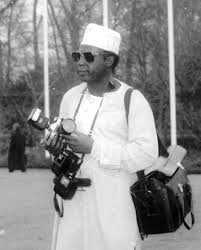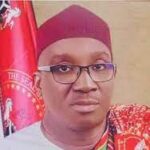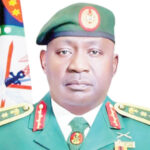I presume that Baba Shettima, who died on Thursday of the penultimate week at the age of 78, would be surprised to be referred to as an iconic photographer. He has always described himself modestly in a more omnibus manner as a photo collector, historian, and photographer. Be that as it may, Baba Shettima has dutifully brought to light through his solo exhibitions some of the most exciting catalogues of photographs that define our history and us as a people. Many of the pictures he has exhibited, a number dating back to the early 19th Century, have never been seen by the public.
He was right to have described himself as a collector and historian. But he could have equally added the appellation of being passionate and visionary. Certainly, many of the pictures in his possession dating back so far couldn’t have been his handiwork. They were taken before he was born. However, having found himself in the Federal Ministry of Information and armed with the right expertise and strategic thinking, Baba Shettima foresaw what was possible for the trove of photographs in their archives. Over many years he was able to curate and document tens of thousands of photos which with his keen eyes knew would be relevant to future historical discourses. He once told Daily Trust in an interview, “I have pictures of all aspects of Nigerian life, ranging from the colonial activities, the pre-independence political activities, the post-independence period, the era of military rule, the 2nd Republic, pictures of landscapes, and magnificent old buildings etc.”
Indeed, he had. This became apparent when he made his debut at the Commonwealth Heads of Government Meeting (CHOGM) held in December 2003 in Abuja, where his photos’ stand drew plenty of attention. Queen Elizabeth II was particularly fascinated with the many photos covering her visit to the country during her youthful days when she was effectively the colonial head of the country. Later he was in demand to hold more exhibitions both in Nigeria and the UK. He held a special photograph exhibition for the Queen in 2006 on her 1956 visit to Nigeria. The Queen attended the exhibition and was clearly delighted as could be seen from the pictures at the event where she was seen holding an animated discussion with Baba Shettima. He also made another exhibition for President Olusegun Obasanjo in 2006, which showcased his activities as the military Head of State from 1976 to 79 as part of what was arranged to mark his 69th birthday.
Baba Shettima’s reputation soared. During Nigeria’s 50th Independence Anniversary in October 2010, he was sponsored to hold three exhibitions simultaneously. The federal government sponsored him to exhibit in Abuja, Lagos State Government in Lagos and the Nigerians in Diaspora in London. During the exhibition in London, the event was even graced by Vice-President Namadi Sambo.
Born in Potiskum in 1946, Baba Shettima was educated at Central Primary School Potiskum from 1953-59. He was a bright student and got admitted into the famous Barewa College, Zaria. It was at the college between 1960 and 1964 that he took up photography as a hobby. At graduation from college, he followed his passion to become a professional photographer. He was employed by the Northern Nigerian Ministry of Information, Kaduna in 1965 and was fortunate to come under the tutelage of Francis Uher, the Chief Photographer of the Northern Region.
Francis Uher was one of the foremost photographers of the colonial era having gone around Africa taking pictures. He was in South Africa, Congo and had the pictures to show for it. He joined the Nigerian Government in Lagos in 1940 before moving to Kaduna in 1955. When he died in 1992 Francis Uher left behind an impressive cache of pictures taken between 1940 and 1979 in many parts of Nigeria, particularly in the Plateau and Benue areas. For services to the art of photography, Francis Uher was knighted by Queen Elizabeth 11 in 1964. A few years ago, the Ilmi House in Kaduna celebrated his life with a presentation of a rich collection of his photos.
At Kaduna, young Baba Shettima came under the wings of the great photographer, Francis Uher and was mentored not only in the art and nitty-gritty of photography but also in the aspects of curation and documentation. He further honed his skills while attending a two-year course in general photography at Kitson College Leeds in the UK. When states were created in 1967, Baba Shettima was redeployed to the North-Eastern State and in 1976 to Borno State. He left Borno State for federal service in 1982 and finally retired at the turn of the century in 2000.
Baba Shettima is reported to have left behind over 10,000 photographs relating to all aspects of our history and culture. These pictures cover a whole range of our history from colonial times to the present. Over the last many, many years the great photographer had painstakingly curated them. There will be no greater tribute to his memory and the task he assiduously worked on than for the relevant institutions to take interest in what he has accumulated over the years. These pictures should be preserved for the future. I hope the National Archives, Arewa House, Ilmi House and others are taking note.

 Join Daily Trust WhatsApp Community For Quick Access To News and Happenings Around You.
Join Daily Trust WhatsApp Community For Quick Access To News and Happenings Around You.


